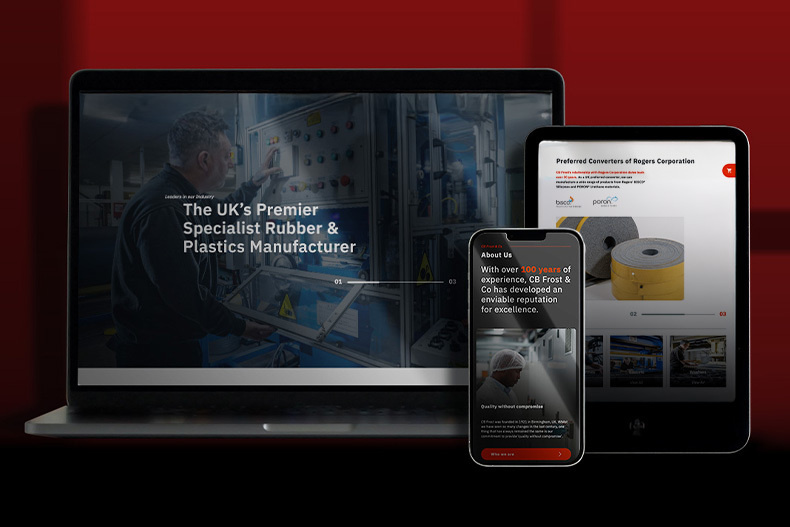Working with a website designer to generate the best first impression

Written by Karl Wheeler from Bluechilli
Did you know that working with a website designer could make the difference between a good first impression and bad one?
The aesthetics and usability of your website have immense power in shaping perceptions of your business - 75 per cent of consumers admit to judging the credibility of a company based solely on its website design.
First impressions are everything, especially in business. It takes less than a second to form an opinion about a person, and websites are no different.
Studies have found that it takes just 50 milliseconds for users to develop an opinion about your website, and by extension, your business. This rapid judgement can determine whether website visitors stay, explore and trust your business, or leave and take their potential business elsewhere.
Your website serves as the main digital face of your business and as a result, it’s one of the most critical investments you’ll make.
By partnering with a skilled website designer, you can create a site that grabs attention and presents trustworthiness and professionalism, both of which are crucial for converting visitors to your website into loyal customers.
In this article, we’ll explore how to work with a web design specialist to craft a site that leaves a lasting, positive impression to set you up for success.
Collaborating with a website designer
Creating a successful custom-coded, high-end website is all about effective collaboration and communication with web designers. If you have a vision, web designers have the skills, experience and knowledge of current trends and technology to make your ideas a reality.
These first conversations lay the foundation for clear communication, ensuring that your business and the web design agency are aligned on the project’s vision and objectives.
During this initial phase, the web designer takes time to understand:
- Your unique selling proposition - what sets you apart from your competition.
- Your target audience - who you want to reach.
- Your goals - the overarching goals you want to achieve.
By delving into your brand identity, your market, and the specific challenges you face, designers can craft a website strategy catered to your needs.
These early exchanges allow you to discuss your expectations, share other website designs that you like, and your priorities, whilst also benefiting from the designer's expertise in translating your insights into actionable design goals.
UX - balancing aesthetics with functionality
The website designer’s job is to ensure that your website delivers excellent user experience (UX) by striking the perfect balance between aesthetics and functionality.
While visually appealing designs capture the attention you need, seamless usability keeps users engaged and encourages them to further explore your business.
A well-thought-out navigation menu is at the heart of this balance, guiding users to the information they need in the most intuitive way possible.
With navigating your site in mind, and to ensure clarity and alignment throughout the design process, web designers will most often begin with creating wireframes - blueprints that outline the structure and layout of the website.
Wireframes show the site’s hierarchy, providing the ideal opportunity for you to review and refine the structure and functionality of the site early on.
It’s on the foundation of these wireframes that page designs are built, integrating the visual elements that are unique to your brand, whilst maintaining a stringent focus on UX to make sure the finished product looks amazing and is highly effective.
SEO
As well as designing and building your website, web designers also play an important role in optimising your site for search engine performance. Key strategies for search engine optimisation (SEO) include:
- Fast page loading speed - efficient coding, compressing images, and caching help to minimise loading times, which is just as important for user experience as it is for search rankings.
- Responsive design - making sure the site works seamlessly across all devices.
- High-quality content - web designers collaborate with copywriters to ensure best practices for high quality, keyword-rich content that resonated with your target audience.
- Clean site architecture - local navigation and URL structures make it easier for search engines to crawl and index your website.
- Meta tags - well-crafted meta tags and descriptions help to improve search engine visibility.
These important elements work together to make sure your website performs well in search engines so it can be found by your audience and deliver value to them.
Testing and feedback
Testing at every stage of a website design project is vital for ensuring a polished and error-free final product.
Web designers meticulously check for any inconsistencies or functionality issues to address potential issues, but they also value feedback from your business to ensure that the website aligns with your aims and expectations.
Regular reviews at each stage provide the opportunity for adjustments to design elements, content, and navigation, until you are 100 per cent satisfied with the result.
This collaborative approach helps ensure a fantastic final product that provides a seamless user experience and provides an accurate representation of your business.
The final product
From understanding your business and goals, to balancing stunning, modern visuals with effortless functionality, a website designer ensures your website is engaging, user-friendly and creates a first impression to set you up for success.
Once your website is launched, this is just the start of your partnership with a web design specialist. As well as providing maintenance support, web designers are on hand to ensure that your website is a living thing - as your business grows and evolves, it’s important that your website does too. A custom website is built to be scalable, so as your vision builds, so can your site.
Read more about the process of working with web designers to craft a polished, custom-built website.
